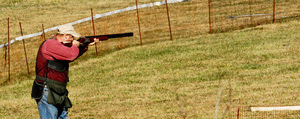
Living at Peace with Pigeons
How pigeon lofts are good news for birds – and also for cities
By Marleen Drijgers.
(Editor’s Note: In her previous post, Marleen Drijgers, the founder of the European Council for Humane and Effective Pigeon Control, described how many cities across Europe have stopped treating pigeons as pests and started to treat them as the beautiful birds they are. Now she explains how to create a good living space for them.)
In the late 1990s, the city of Rotterdam, Germany, laid out a plan to kill all its pigeons. I had already had success in persuading several town, in Holland, where I live, that mass killings do not reduce the population in the long term and are not only cruel but a waste of taxpayer money. So I was invited to address the council in Rotterdam. The majority of the council agreed with me and they vetoed the plan.
At the same time, I met a German artist, Stefan Gross, who was living and working in Rotterdam. Stefan told me that in two cities in Germany, pigeons were not being killed anymore. Instead, they were living in pigeon lofts donated by well-wishers. After our meeting, Stefan proceeded to design a modern loft for the pigeons of Rotterdam, and local bird associations began organizing with city councils, volunteers and private donors to have them installed and maintained.
When pigeons get a beautiful loft where they can eat and sleep, they also get a makeover in peoples’ minds. Because the lofts are good-looking, modern and practical, people stop thinking of their inhabitants as dirty, ugly, flying vermin. Good food results in good-looking, healthy birds of which a city can be proud. And the lofts themselves are artistic pieces of architecture.
The pigeon lofts
The lofts are made of aluminum, so they are not heavy. They are also insulated, so they’re cool in summer and warm in winter. And they’re attached to the rooftop of a building in a way that ensures they are storm-proof.
Not every city pigeon needs a loft. Lofts are for places where the birds gather in flocks, creating a nuisance. A pigeon loft is a humane solution that reduces complaints that droppings and nests are polluting buildings and apartment blocks.
The loft must be built close to places where the pigeons are already sleeping and nesting. A loft in a park does not solve the problem. Pigeons like sitting high on rooftops, so rooftops are good places for lofts.
Caring for the pigeons
To prevent a pigeon loft from becoming overcrowded, volunteers remove eggs and replace them with plastic eggs. Only when female pigeons brood very often do they leave a single egg that will hatch. In a loft where 150 pigeons sleep and brood, more than 300 eggs and more than 600 pounds of pigeon droppings will be removed each year. (Pigeon eggs are edible by humans, so I like to think the pigeons are paying the “rent” for their house in eggs.) We also provide them with a good mixture of cereals and seeds and fresh water daily.
Caring for the pigeons obviously takes some work. As I mentioned in my previous post, I became interested in pigeons through my neighbor, who used to put out food for them on her roof. I began to do the same thing, putting out a big bowl of drinking water and a small tub for bathing. It was lovely to see the pigeons splashing in the water and also grooming and looking after each other. Once a week, I had to clean my rooftop of pigeon dung, but I didn’t mind – the pleasure exceeded the nuisance.
In some European cities where pigeon lofts are taking hold, the people who look after the pigeons and clean the lofts are paid for their work. In others, this work is done by volunteers who love pigeons. It just takes a little organization to make sure the routine is maintained. And the small investment of paying someone to do this work is far less than the cost of pigeon extermination.
The new lifestyle we provide for the pigeons also increases their lifespan. Without a loft, a pigeon’s life expectancy is about 3 years. Pigeons living in a loft live longer because of the good food and the shelter from rain, snow and wind.
Also, for racing pigeons who get lost during the races, the lofts are a true sanctuary where they can live for the rest of their lives. (Most pigeon keepers are not interested in having them back, because there are no longer any prizes to be won with them.)
Here in the Netherlands, there are now pigeon lofts in five cities, and plans are in motion for three more cities. In Germany, there are lofts in almost 40 cities and there are also some in Belgium, France, Italy and the U.K. I’ve also had some inquiries from Athens in Greece.
More and more cities are seeing that this humane method is also effective, and more and more cities are discovering that installing lofts is far preferable to the senseless and cruel killing.
I hope that cities in the U.S. choose for pigeon lofts as well. They are peaceful birds, so we should let them live in peace.
~~~~~~~~~~~~~~~~~~~~~~~~~~~~
Marleen Drijgers is the founder of the European Working Group for Effective Pigeon Control. You can contact her directly there for more information about creating a pigeon loft, or introduce her work to your local bird protection group.
There are no organized city programs in the United States yet to create lofts for city pigeons. For more information about helping pigeons in the United States, visit the New York Bird Club.











